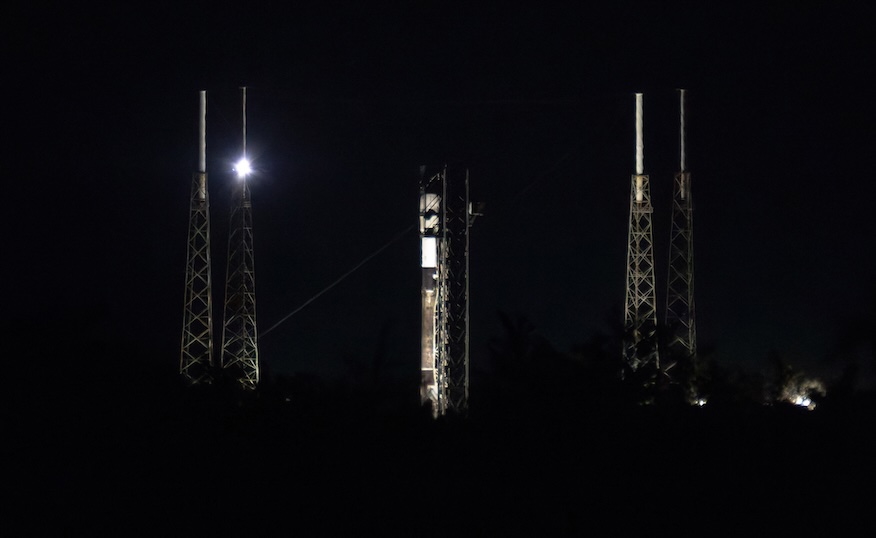
Live coverage: SpaceX to launch unspecified satellite on a Falcon 9 rocket from Cape Canaveral
How did your country report this? Share your view in the comments.
Diverging Reports Breakdown
SpaceX launches Israeli satellite on a Falcon 9 rocket from Cape Canaveral – Spaceflight Now
SpaceX launched a Falcon 9 rocket early Sunday carrying the Israeli Dror 1 satellite. The mission was initially shrouded in secrecy as the satellite’s manufacturer, Israel Aerospace Industries (IAI), shunned any pre-launch publicity. The Falcon 9 payload fairing carried the logo of IAI, a state-owned company owned in Israel. IAI said its January 2020 press release that the satellite is part of a 2018 Israeli strategy to establish an on orbit communications system designed for its national interests. The satellite is designed to operate in geostationary Earth orbit, about 36,000 km in altitude. It can broadcast data from one antenna and receive from another, according to JNS, a news agency focused on topics concerning Israel and other Jewish people around the world. The first stage of the Falcon 9 booster with the first stage tail number B1083 flew for a 13th time. This was the 128th booster landing for this vessel and the 474th for SpaceX to date.
The mission, referred to by SpaceX as ‘Commercial GTO-1,’ lifted off at 1:04 a.m. EDT (0504 UTC) on Sunday, July 13.
Despite the secrecy pre-launch, the Falcon 9 payload fairing carried the logo of IAI, a state-owned company owned in Israel. The company finally confirmed the launch of its Dror 1 satellite in a news release, issued several hours after the launch.
“We at IAI are extremely proud of the development and successful launch into space of the State of Israel’s “Dror 1” national communications satellite,” Boaz Levy, CEO and President of IAI said in a statement. “Dror 1 is the most advanced communications satellite ever built in Israel, designed to preserve this national strategic capability in the country while providing Israel with essential satellite communications capabilities for years to come.”
SpaceX used the Falcon 9 booster with the first stage tail number B1083, which flew for a 13th time. Its previous missions included NASA’s Crew-8, Polaris Dawn and CRS-31.
Roughly 8.5 minutes after liftoff, B1083 landed on SpaceX’s droneship, ‘Just Read the Instructions.’ This was the 128th touchdown for this vessel and the 474th booster landing to date.
Pre-launch secrecy
The veil of secrecy around the mission is not often seen for a commercial SpaceX launch. While rare, the Commercial GTO-1 mission isn’t the first time SpaceX has been asked by a customer to avoid disclosing details publicly. Launches for the National Reconnaissance Office and the U.S. Space Force are often kept under wraps, because of national security reasons.
In November 2024, SpaceX launched a mission simply referred to as TD7. Regulatory filings called the payload ‘Optus-X,’ which was connected to a company called Optus, a company connected to SingTel Australia Investment Ltd.
SpaceX’s webcast ended at the request of the customer following first stage landing.
During the retraction of the strongback at Space Launch Complex 40 at Cape Canaveral Space Force Station, the Falcon 9 payload fairings showed the logo for Israel Aerospace Industries (IAI). SpaceX only referred to the satellite’s owner as “the customer” during its broadcast. Image: SpaceX via livestreamIAI announced the development of the Dror 1 satellite in January 2020 and said it was designed to operate for 15 years. The satellite was developed by the company’s Systems, Missile and Space Group.
“We are excited to move forward with Dror 1, the most advanced communication satellite ever built in Israel,” said Boaz Levy, said at the time. “It will comprise numerous state-of-the-art technologies created here in Israel and contain highly-advanced digital capabilities.
The Dror 1 satellite is designed to operate in geostationary Earth orbit, about 36,000 km in altitude. IAI said its January 2020 press release that the satellite is part of a 2018 Israeli strategy to establish an on orbit communications system designed for its national interests.
“This government decision stems from the understanding that the capability for communication independence is of critical national importance, as well as to enable the preservation of the knowledge and expertise that has been accumulated by Israel over the past years,” IAI wrote.
According to a 2020 writeup on the satellite in the Jewish News Syndicate (JNS), a news agency focused on topics concerning Israel and other Jewish people around the world, the four-ton satellite features a number of components from Israel and is designed to be modular in capability, like a smartphone.
“This is a fully digital satellite that can upload applications. It can broadcast data from one antenna and receive from another,” said Shlomi Sudri, general manager of IAI’s Space Division, told JNS.
The satellite appears to be part of IAI’s AMOS communications satellite series. These are multi-band satellite buses that are in the 3-6 ton class.
The last AMOS payload built by IAI to be placed atop a SpaceX Falcon 9 rocket, AMOS 6, was destroyed when an explosion occurred in the rocket’s upper stage on Sept. 1, 2016 prior to a planned static test fire.
